Smith Rock State Park
- January 30, 2024
- 0 comment
Discover Smith Rock State Park’s majestic landscapes, ideal for hiking, climbing, and nature photography. A serene outdoor paradise. Explore the natural beauty of Smith Rock State Park, a haven in Oregon’s high desert perfect for hiking, climbing, and photography. Known for its impressive rock formations and the beautiful Crooked River, the park offers a variety of activities amidst stunning scenery. Whether you’re seeking adventure or a peaceful escape, Smith Rock provides an unforgettable outdoor experience.
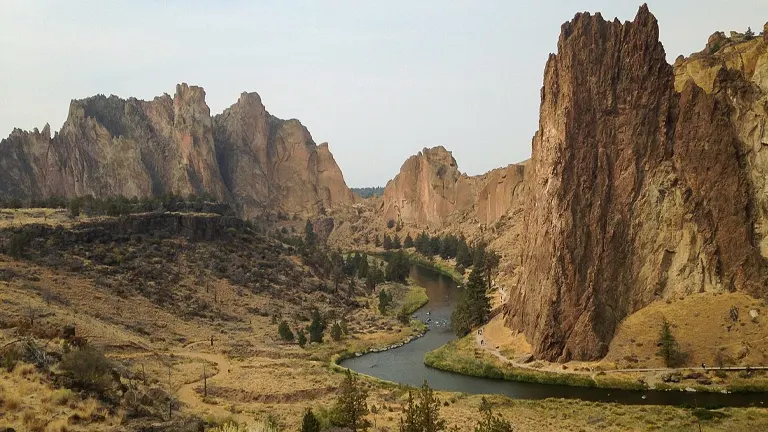
Characterizing Features of Smith Rock State Park
- Majestic Rock Formations Smith Rock State Park is renowned for its spectacular rock formations, which are a central feature of the park’s landscape. These formations are primarily made of volcanic tuff and basalt, offering an imposing and rugged appearance that has become an iconic symbol of the park. Their immense size and unique shapes not only create a visually stunning backdrop but also provide world-class climbing opportunities. Climbers from across the globe are drawn to Smith Rock to challenge themselves on routes like the famous Monkey Face and the Morning Glory Wall.
- The Crooked River Winding through the heart of Smith Rock State Park, the Crooked River is a vital and dynamic part of the ecosystem. This river adds a serene yet vibrant aspect to the park, contrasting with the starkness of the rock formations. It serves as a crucial water source for the park’s flora and fauna and offers a variety of recreational activities. Visitors can enjoy peaceful walks along the riverbanks, try their hand at fishing, or simply relax by the water, soaking in the stunning scenery.
- Scenic Trails The network of trails at Smith Rock State Park is a highlight for many visitors, providing access to its diverse landscapes. From easy strolls to challenging hikes, these trails cater to all levels of outdoor enthusiasts. The Misery Ridge Trail, one of the park’s most popular, takes hikers up steep inclines to rewarding views of the surrounding area. Meanwhile, the River Trail offers a more leisurely experience, perfect for families or those looking for a gentle walk amidst nature. Each trail not only showcases the park’s natural beauty but also allows for wildlife viewing and photographic opportunities.
- High Desert Climate and Vegetation The park is situated in a high desert climate zone, characterized by hot, dry summers and cold, snowy winters. This climate has shaped the unique vegetation of the area, which includes juniper trees, sagebrush, and a variety of grasses and wildflowers. These plants have adapted to the arid conditions, and their presence adds to the distinct landscape of the park. The high desert vegetation not only provides habitat for local wildlife but also contributes to the park’s overall ecosystem health.
- Birdwatching Opportunities Smith Rock State Park is a haven for birdwatchers, thanks to its diverse bird population. The park’s varied habitats support a range of bird species, from waterfowl along the river to raptors soaring above the cliffs. Notably, the park is home to several species of falcons, eagles, and hawks, making it an excellent spot for observing these majestic birds. Birdwatching enthusiasts can enjoy spotting these creatures in their natural habitat, adding an educational and enjoyable aspect to their visit.
History of Smith Rock State Park
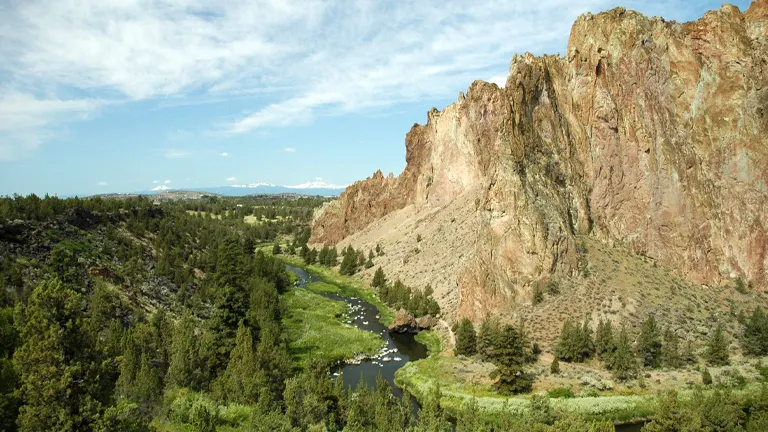
Smith Rock State Park, with its rich and storied past, stands as a testament to both natural history and human interaction with the land. Formed millions of years ago through volcanic activity, its striking rock formations were shaped by the forces of erosion, creating the rugged landscape known today. Historically, the park holds significance for Native American tribes, who valued it for its natural resources. In the 20th century, Smith Rock saw a transformation from a local secret to a world-renowned climbing destination, especially after the 1980s, when it became synonymous with the birth of modern American sport climbing. This evolution marked Smith Rock not only as an ecological marvel but also as a cultural and recreational beacon, drawing visitors from around the world to experience its unique blend of history and natural beauty.
Unique Ecosystem of Smith Rock State Park
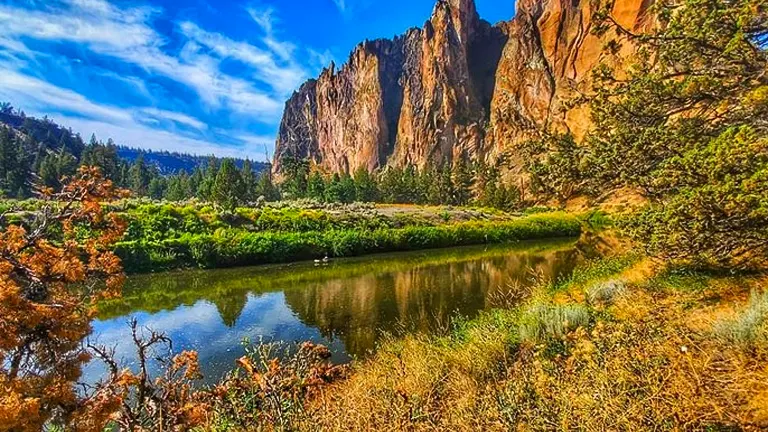
Smith Rock State Park showcases a distinctive ecosystem, where the high desert meets the riparian environment of the Crooked River. This confluence creates a unique ecological niche, characterized by a diverse range of flora and fauna. On the arid, sunbathed cliffs and plains, resilient species such as juniper trees, sagebrush, and various grasses dominate, having adapted to the sparse rainfall and extreme temperature variations. The river valley, in stark contrast, provides a lush corridor, supporting a variety of water-loving plants and animals. This juxtaposition allows for an extraordinary mix of wildlife, including birds of prey like the golden eagle and prairie falcon, alongside riverine species and larger mammals like mule deer. The park’s ecosystem is a dynamic interplay between the dry and the damp, the rugged and the resilient, offering an invaluable insight into the adaptability of nature and the importance of diverse habitats coexisting in close proximity.
Location of Smith Rock State Park
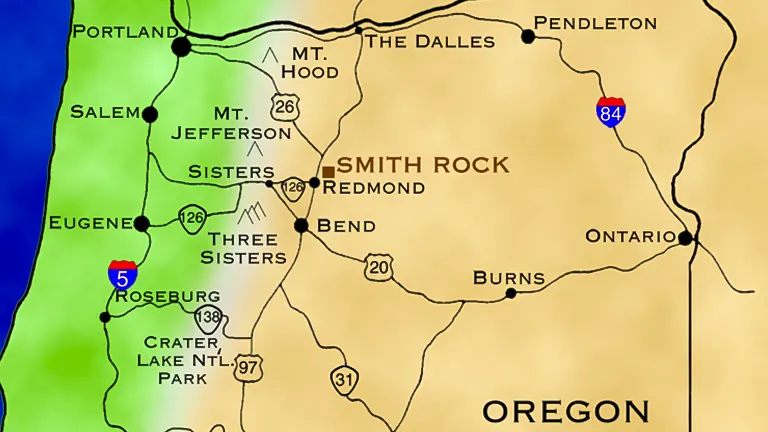
Smith Rock State Park is located in Central Oregon, near the town of Terrebonne, just 26 miles north of Bend. Positioned within the high desert region, the park is easily accessible via U.S. Route 97. Its unique setting offers a striking landscape, blending rugged desert terrain with the lush scenery of the Deschutes River Valley. This prime location makes Smith Rock a popular destination for both local and visiting outdoor enthusiasts.
Here’s a list of guidance on how to get to Smith Rock State Park:
1. From Portland, Oregon:
- Take US-26 E to US-97 S.
- Follow US-97 S to Lower Bridge Way in Terrebonne.
- Take the Lower Bridge Way exit from US-97 S.
- Continue on Lower Bridge Way. Take NW 43rd St and NW Smith Rock Way to NE Crooked River Dr.
- The journey typically takes about 3 hours.
2. From Bend, Oregon:
- Head north on US-97 N toward Terrebonne.
- Take the exit toward Smith Rock State Park.
- Merge onto Lower Bridge Way, then continue as above.
- Travel time is usually around 30 minutes.
3. From Eugene, Oregon:
- Follow OR-126 E and US-20 E to US-97 N in Bend.
- Take the exit toward Smith Rock State Park from US-97 N.
- Then proceed as indicated in the directions from Bend.
- Expect the drive to take approximately 3 hours.
4. Public Transportation Options:
- Public transport to Smith Rock is limited. The closest option is the Central Oregon Breeze bus service, which operates between Portland and Bend.
- From Bend, you would need to arrange a taxi or rideshare service to reach the park.
5. Nearby Airports:
- The closest major airport is the Redmond Municipal Airport (RDM), about 15 minutes away by car.
- Car rentals are available at the airport for the short drive to the park.
6. Cycling to the Park:
- For the adventurous, cycling to Smith Rock from nearby cities like Bend is an option. Ensure you have a map and sufficient water, as the route can be challenging.
7. Hiking Trails Leading to the Park:
- If you’re already in the area and enjoy hiking, several trails lead into Smith Rock State Park, offering scenic views along the way. Ensure you have a trail map and are prepared for the terrain.
The Importance of Conservation and Recreation in Smith Rock State Park
The importance of conservation and recreation at Smith Rock State Park is paramount, as it exemplifies the delicate balance between preserving natural beauty and providing recreational opportunities. The park’s diverse ecosystems, from its towering rock formations to the riparian habitats along the Crooked River, require careful stewardship to maintain their ecological integrity and biodiversity. Conservation efforts ensure the protection of native species and their habitats, while also mitigating the impact of human activities.
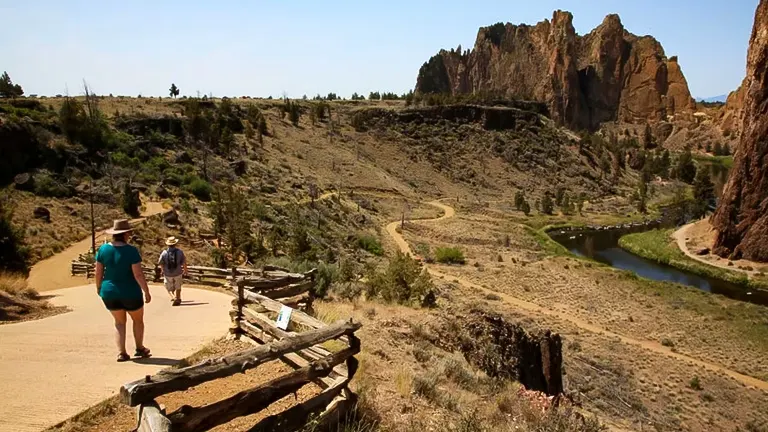
Simultaneously, the park serves as a premier destination for outdoor recreation, offering climbing, hiking, and wildlife viewing, which not only fosters a deeper appreciation for nature among visitors but also stimulates local economies. This synergy of conservation and recreation at Smith Rock underscores the necessity of sustainable environmental practices, ensuring that this natural treasure remains vibrant and accessible for future generations.
Diverse Vegetation and Plant Species in Smith Rock State Park
- Juniper Trees (Juniperus occidentalis): These evergreen trees are a defining feature of the park’s high desert landscape. Adaptable to dry conditions, they provide essential habitat and food for local wildlife.
- Sagebrush (Artemisia tridentata): This hardy shrub is characteristic of the park’s arid environment. Its presence is vital for many species, offering shelter and sustenance, and contributing to the unique aroma of the high desert.
- Bitterbrush (Purshia tridentata): A resilient shrub native to the park, bitterbrush thrives in dry, rocky soils. It blooms with small, yellow flowers in spring, adding to the park’s scenic beauty.
- Wild Rye Grasses (Elymus): These native grasses are adapted to the dry conditions of the park. They play a crucial role in soil stabilization and provide food for the park’s herbivorous wildlife.
- Indian Paintbrush (Castilleja): Known for their vibrant red and orange flowers, these plants add a splash of color to the park’s landscape, especially in spring and early summer.
- Prairie Clover (Dalea): This flowering plant is often found in the open grassy areas of the park. Its blooms are not only visually striking but also attract a variety of pollinators.
- Rabbitbrush (Chrysothamnus nauseosus): Common in the park’s desert environment, rabbitbrush is easily recognizable by its dense clusters of yellow flowers in late summer and fall.
- Lupines (Lupinus): These flowering plants, with their distinctive blue to purple flowers, are a treat for the eyes. They typically bloom in the late spring and are a vital nectar source for bees and butterflies.
- Oregon Grape (Mahonia aquifolium): While less common in the arid environment, this evergreen shrub can be found in moister areas of the park. It produces yellow flowers and blue-black berries, which are an important food source for birds.
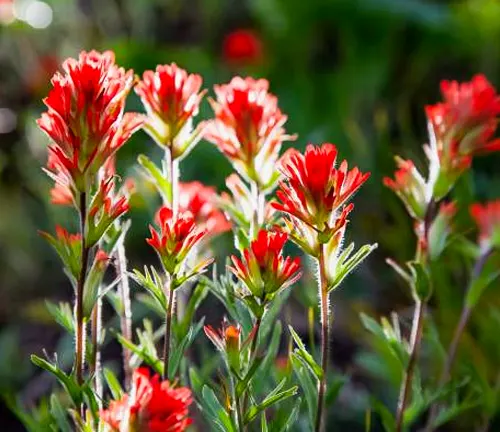

Fauna in Smith Rock State Park
- Golden Eagle (Aquila chrysaetos): These majestic birds of prey are a significant feature of the park’s ecosystem. They can often be seen soaring high above the cliffs, scanning for prey with their keen eyesight.
- Prairie Falcon (Falco mexicanus): A smaller but no less impressive raptor, the prairie falcon inhabits the rocky outcrops of the park. Their high-speed dives during hunting are a spectacle for birdwatchers.
- Mule Deer (Odocoileus hemionus): These large mammals are commonly spotted in the park, especially during dawn and dusk. They graze on the park’s vegetation and are a vital part of the ecosystem.
- River Otter (Lontra canadensis): In the Crooked River, one might spot the playful river otter. These aquatic mammals are a sign of a healthy river ecosystem and are a joy to watch as they swim and hunt.
- Western Rattlesnake (Crotalus oreganus): This reptile, while less commonly seen, is an important part of the park’s food web. They help control rodent populations and in turn serve as prey for larger predators.
- Great Basin Collared Lizard (Crotaphytus bicinctores): These colorful lizards are often found basking on the warm rocks. They are known for their distinctive collars and can be quite fast when startled.
- Bald Eagle (Haliaeetus leucocephalus): Although less common than the golden eagle, bald eagles can occasionally be seen at Smith Rock. Their presence is a symbol of the successful conservation efforts in the area.
- Peregrine Falcon (Falco peregrinus): Known for being one of the fastest birds in the world, the peregrine falcon has made a remarkable comeback in the area, thanks to conservation efforts.
- Beaver (Castor canadensis): Along the Crooked River, beavers play a crucial role in shaping the riparian habitat. Their dams create wetlands, which support a diverse array of other species.
- Various Butterfly Species: The park is home to numerous butterfly species, which are attracted to the diverse flora. They play a vital role in pollination within the park’s ecosystem.
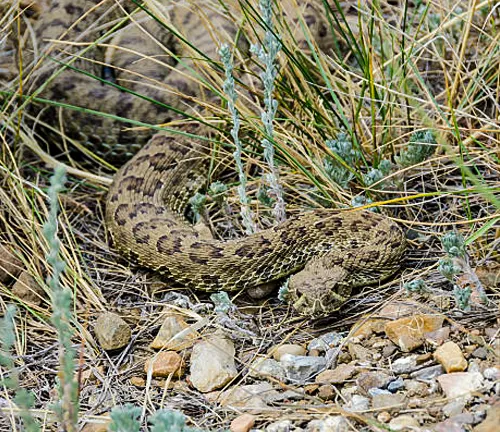
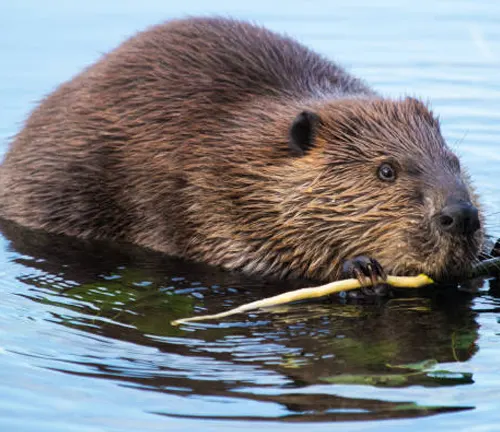
Attractions in Smith Rock State Park
Monkey Face: Monkey Face is a well-known and distinct rock formation within the park, resembling a giant monkey’s head. It stands as a beacon for rock climbers, offering challenging routes, including some of the most difficult in North America. This formation is not only a test of skill for climbers but also a spectacular sight for all park visitors, symbolizing the unique geological features of Smith Rock.
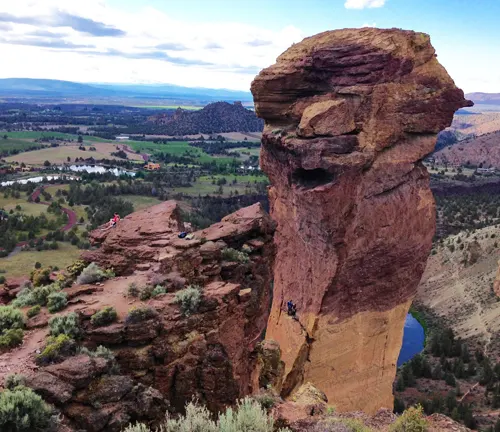

Misery Ridge Trail: The Misery Ridge Trail is a popular hiking path known for its challenging ascent and rewarding views. As hikers navigate the steep switchbacks, they are treated to panoramic vistas of the park and the surrounding high desert. Reaching the top, visitors are rewarded with a breathtaking overlook of the Crooked River and the Cascade Mountains, making it a must-do for any park visitor.
The Crooked River: Winding its way through the park, the Crooked River is a central attraction, offering not only a picturesque setting but also opportunities for fishing, wildlife observation, and leisurely walks along its banks. The river’s presence adds to the serene beauty of the park, contrasting with the stark rock formations.
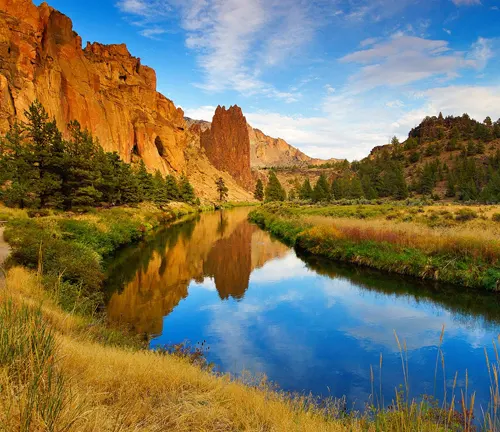
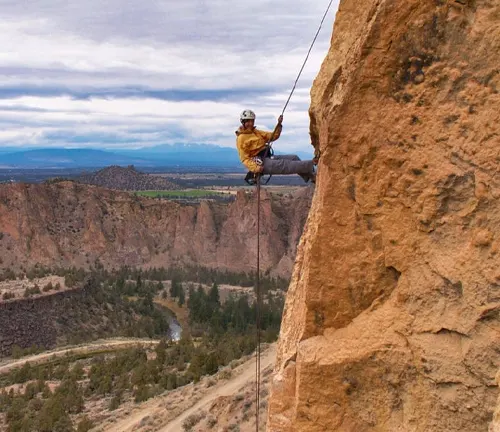
Climbing Routes: Smith Rock is globally renowned for its climbing routes, catering to all levels from beginners to experts. The park boasts over a thousand bolted routes, including sport climbs and traditional climbs, making it a climber’s paradise. The variety of routes ensures that every climber, regardless of their skill level, can find a suitable challenge.
The Dihedrals: A prominent climbing area within the park, The Dihedrals is known for its sheer, vertical faces and a variety of routes. This area is particularly popular among more experienced climbers looking for technical challenges and is also a great spot for spectators to watch climbers in action.
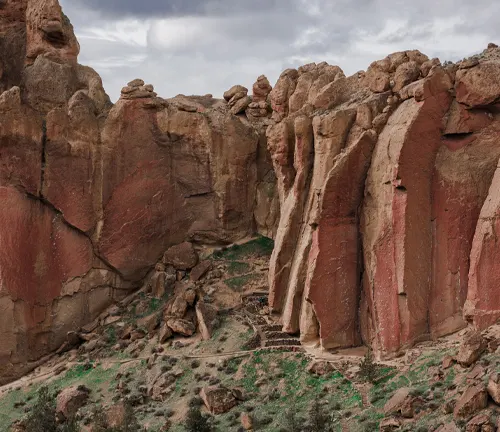
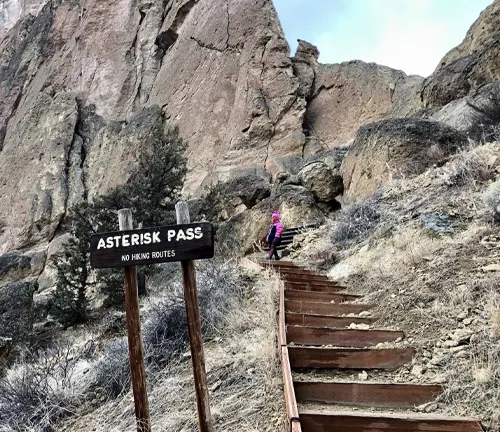
Asterisk Pass: This unique feature is a narrow gap between towering rock formations, offering a thrilling scramble for adventurous hikers. The pass provides a different perspective of the park’s landscape and is a testament to the erosive forces that have shaped Smith Rock.
Bivouac Camping Area: For those looking to extend their stay, the Bivouac Area provides camping facilities. This area allows visitors to immerse themselves in the park’s natural beauty, experiencing the stunning sunrises and sunsets, and stargazing opportunities in the clear high desert sky.

Recreational Activities in Smith Rock State Park
- Rock Climbing: Smith Rock is a world-renowned climbing destination, offering over a thousand climbing routes that cater to all skill levels. From the beginner-friendly pitches to some of the most challenging climbs in North America, the park is a climber’s paradise. The variety of climbing experiences available, including sport climbing, traditional climbing, and bouldering, makes it an ideal location for both novice and experienced climbers to push their limits and hone their skills.
- Hiking: The park offers a range of hiking trails that cater to every fitness level. Popular trails like Misery Ridge provide a rigorous workout with rewarding views, while the River Trail offers a more relaxed walk with scenic river vistas. Each trail showcases the park’s unique geological features, flora, and fauna, making hiking here a truly immersive nature experience.
- Photography: With its breathtaking landscapes, Smith Rock State Park is a haven for photographers. The juxtaposition of the rugged rock formations against the serene river and diverse wildlife provides endless opportunities for capturing stunning images. Whether you’re a professional photographer or an amateur with a smartphone, the park’s natural beauty at different times of the day and year offers a plethora of picturesque scenes.
- Bird Watching: The park’s diverse ecosystems make it an excellent location for bird watching. Home to a variety of bird species including raptors like golden eagles and peregrine falcons, as well as waterfowl along the Crooked River, Smith Rock provides bird enthusiasts with ample opportunities to observe these creatures in their natural habitat.
- Fishing: The Crooked River that winds through the park is a popular spot for fishing, especially for trout. Anglers can enjoy the serene environment while engaging in fly fishing or traditional fishing methods. The river’s clear waters and the variety of fish species make it an enjoyable experience for both novice and experienced anglers.
- Picnicking: The park offers several picnic areas where visitors can relax and enjoy meals with a view. These areas are perfect for families and groups to gather and take in the scenic surroundings, making for a peaceful break amidst a day of adventure.
- Wildlife Observation: For nature lovers, the park is a fantastic location for wildlife observation. From mule deer and river otters to a variety of lizards and small mammals, the park’s habitats support a rich diversity of wildlife, providing visitors with the chance to observe these animals in their natural environment.
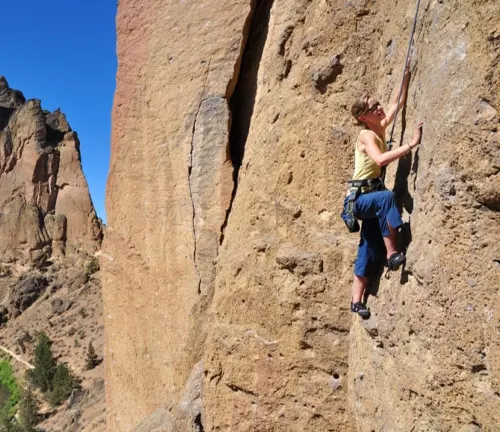
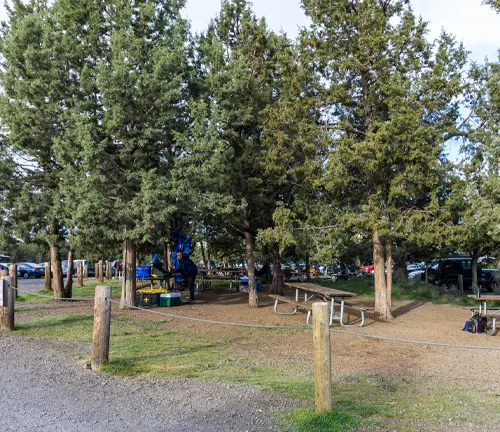
Different Facilities and Amenities in Smith Rock State Park
- Camping Facilities: The park offers a designated Bivouac Area for camping, which includes tent sites, restrooms, and a shower facility. This area allows visitors to fully immerse themselves in the natural beauty of the park, with camping spots available on a first-come, first-served basis. It’s an ideal place for those looking to experience the park over multiple days, whether for climbing, hiking, or simply enjoying the outdoors.
- Picnic Areas: Scattered throughout the park are several picnic areas equipped with tables and benches. These spots provide a perfect setting for a family picnic or a restful break amidst exploring the park. The picnic areas are strategically located to offer stunning views of the surrounding landscapes, making them a pleasant place to relax and refuel.
- Restrooms and Drinking Water: The park is equipped with restroom facilities, including vault toilets, located near popular trailheads and the main parking area. Drinking water stations are also available, ensuring visitors can stay hydrated while exploring the park.
- Parking Areas: Smith Rock State Park has a main parking lot near the Welcome Center, providing convenient access to the trailheads and the river. There is a day-use parking fee, which goes towards the maintenance and improvement of park facilities.
- Welcome Center: The Welcome Center at the park entrance serves as an informational hub for visitors. Here, you can find maps, guidebooks, and friendly staff to offer advice on trails, climbing routes, and park safety. The center also provides educational displays about the park’s history, geology, and wildlife.
- Viewpoints and Observation Areas: The park features several designated viewpoints and observation areas, where visitors can enjoy spectacular vistas of the rock formations, river, and the surrounding high desert landscape. These areas are accessible via short walks from the main trails and are equipped with safety railings.
- Trail Markers and Informational Signage: Throughout the park, well-marked trails and informational signs guide visitors, providing insights into the park’s geology, flora, fauna, and history. These markers and signs enhance the educational aspect of a visit to Smith Rock.
- Climbing and Safety Information: For climbers, the park offers detailed information on climbing routes, safety guidelines, and current conditions at the Welcome Center. This information is crucial for ensuring a safe and enjoyable climbing experience.
Tips and Advice for Visiting Smith Rock State Park
- Plan for the Weather: The high desert climate of Smith Rock means wide temperature variations between day and night and across seasons. It’s advisable to check the weather forecast before your visit and dress in layers. Summers can be hot, so bring sun protection, while winters can be cold, necessitating warm clothing. Always carry sufficient water, regardless of the season, to stay hydrated.
- Wear Appropriate Footwear: Given the rocky and uneven terrain, sturdy hiking shoes or boots are essential for safety and comfort. Whether you’re hiking the trails or walking along the river, good footwear will protect your feet and provide better grip on the varied surfaces.
- Familiarize Yourself with Park Rules: Understanding and adhering to park rules, especially those related to wildlife, camping, and trail use, is crucial for preserving the natural environment of Smith Rock. Rules are in place to protect both the park’s natural beauty and its visitors, so ensure you’re familiar with them.
- Climbing Safety: If you plan to climb, ensure you’re equipped with the necessary gear and knowledge. Check the current conditions and any route closures at the Welcome Center. If you’re new to climbing, consider hiring a guide or joining a climbing class offered in the area.
- Leave No Trace: Practice Leave No Trace principles to minimize your environmental impact. This includes packing out all trash, staying on designated trails to protect sensitive habitats, and not disturbing wildlife.
- Wildlife Awareness: While wildlife encounters at Smith Rock are generally safe, it’s important to maintain a respectful distance, especially from larger animals like mule deer. Be aware of smaller creatures like snakes and lizards as well.
- Water and Snacks: Always bring more water than you think you’ll need, especially in the summer months, as dehydration can be a risk. Pack energy-rich snacks or a lunch, particularly if you plan to spend the whole day at the park.
- Early Arrival or Weekday Visits: The park can get crowded, especially on weekends and holidays. Arriving early ensures you get a parking spot and enjoy the trails with fewer people. Alternatively, visiting on a weekday can offer a more serene experience.
- Photography Considerations: For photographers, the golden hours of sunrise and sunset provide exceptional lighting for capturing the beauty of the park. Also, consider the varying angles and perspectives available from different trails and viewpoints.
- Be Prepared for Emergencies: Carry a basic first-aid kit, a map of the park, and a charged cell phone. However, be aware that cell service can be patchy in some areas of the park.
Recommendation
Smith Rock State Park is a must-visit for anyone interested in nature, adventure, or simply seeking a peaceful retreat in the great outdoors.
Conclusion
Smith Rock State Park is a treasure trove of natural beauty, offering an escape into a world where the grandeur of nature reigns supreme. Its diverse landscapes, rich history, and abundant recreational opportunities make it a destination worthy of exploration and admiration.
FAQs
- What’s the best time of year to visit Smith Rock State Park for climbing?
Spring and fall are ideal for climbing due to the milder temperatures. Summers can be quite hot, and winters cold, but climbers often visit year-round, adjusting their climbing times to the weather. - Are there any beginner-friendly hiking trails at Smith Rock?
Yes, the River Trail is great for beginners. It’s relatively flat and offers beautiful views of the park without the challenging elevation changes found on other trails. - Can I do a day trip to Smith Rock State Park from Portland?
Yes, it’s possible as a long day trip. The drive takes about 3 hours each way, so it’s a full day of travel and exploration. - Do I need a permit for rock climbing at Smith Rock?
No, you don’t need a special permit for climbing, but you must adhere to park rules and regulations. Climbers should also check for any route closures or restrictions at the park entrance. - Is overnight camping allowed in the park?
Yes, overnight camping is available in the Bivouac Area, which offers basic amenities like restrooms and showers. It operates on a first-come, first-served basis. - Are there guided tours available in Smith Rock State Park?
Yes, guided tours are available, offering various activities like climbing, hiking, and bird watching. These tours are great for gaining in-depth knowledge about the park. - Is wildlife viewing a popular activity in the park?
Absolutely, the park’s diverse habitats support a variety of wildlife, including birds of prey, mule deer, and river otters, making it a great place for wildlife observation. - What should I bring for a day visit to Smith Rock?
It’s essential to bring water, snacks, sun protection, appropriate clothing for the weather, and sturdy footwear. If you plan to hike or climb, bring the necessary gear for those activities as well.
As we wrap up our journey through Smith Rock State Park, we carry with us the vivid images of its towering rocks and serene river, and the exhilarating experiences it offers. This park isn’t just a place, but a gateway to adventure and natural wonder. Until your next visit, let the memories of Smith Rock inspire your adventures ahead.


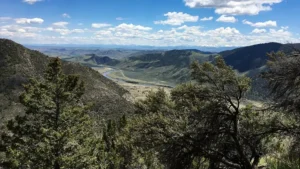
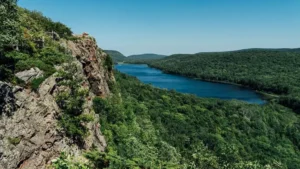


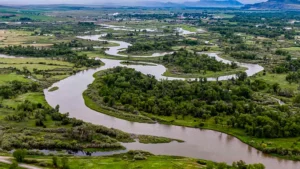
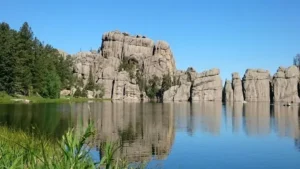


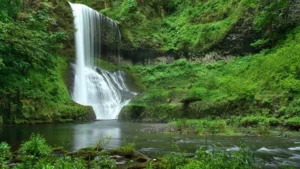
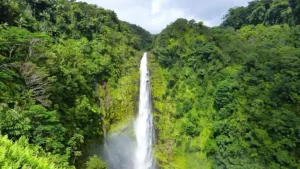
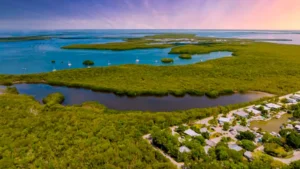

Leave your comment